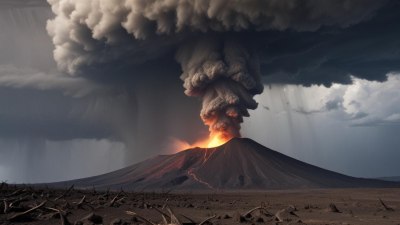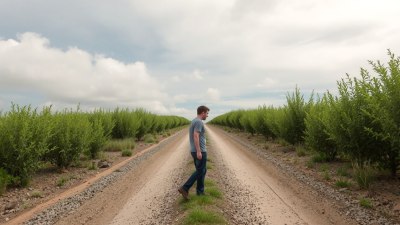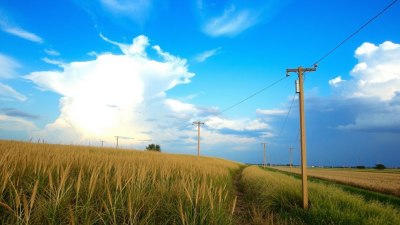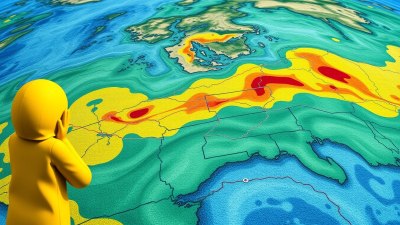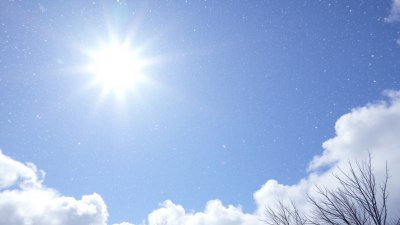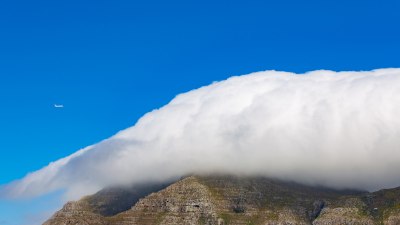What Causes Drizzle vs Light Rain
Explore the differences between drizzle and light rain, their causes, formation processes, and weather impacts explained simply.
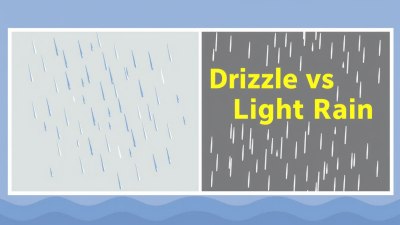
Rainfall is a common atmospheric phenomenon experienced worldwide, yet not all rain is the same. Among the various types of rain, drizzle and light rain often confuse many due to their subtle differences in appearance and intensity. Understanding what causes drizzle versus light rain requires examining the microphysical processes within clouds, the size of the water droplets, and the atmospheric conditions involved.
Defining Drizzle and Light Rain
Drizzle can be described as very fine liquid water droplets that fall slowly through the air. Typically, drizzle droplets have diameters less than 0.5 millimeters (500 micrometers). Conversely, light rain consists of larger water droplets, which are generally between 0.5 to 2 millimeters in diameter. The rainfall intensity of light rain ranges approximately from 0.1 to 2.5 millimeters per hour.
The primary visual difference between drizzle and light rain is the size and fall speed of the droplets. Drizzle appears as a misty or foggy curtain with tiny droplets that seem to float gently and reduce visibility moderately, whereas light rain presents as more distinct droplets falling at a slightly faster rate, making it easier to feel when outdoors.
How Droplet Size Affects Rain Type
The size of raindrops plays a pivotal role in their classification as drizzle or light rain. The physics behind droplet growth involves condensation, collision, and coalescence within clouds. In drizzle formation, cloud droplets remain small and nearly uniform, often because the vertical motions within the cloud and cloud dynamics limit the collision efficiency. This leads to the generation of numerous tiny droplets instead of few large ones.
In contrast, during light rain episodes, cloud droplets grow larger through processes like collision-coalescence, where small droplets collide and merge into bigger drops. These larger droplets overcome air resistance more effectively and fall faster toward the ground, resulting in a perceptible drizzle-to-rain transition.
Cloud Types and Atmospheric Conditions
Drizzle primarily originates from stratiform clouds such as stratus or altostratus clouds, which are relatively thin, layered clouds with weak vertical development. These clouds contain a high concentration of tiny supercooled water droplets or small water drops that fall slowly due to minimal updrafts or turbulence.
Light rain is more often associated with clouds having moderate vertical growth, like nimbostratus or certain showers within warm frontal systems, where enhanced cloud dynamics promote droplet growth and precipitation efficiency. These clouds produce droplets large enough to fall more rapidly, generating the feel and visual aspect of light rain.
Microphysical Processes Behind Drizzle Formation
The microphysics involved in drizzle formation focus mainly on small droplet sizes sustained within a cloud. One crucial factor is the presence of stable temperature profiles near the cloud base, where the atmosphere does not encourage vigorous vertical movements. Consequently, cloud droplets remain suspended and slowly grow by condensation from water vapor, rather than through significant collision and coalescence.
Additionally, drizzle formation relates closely to the amount of available cloud condensation nuclei (CCN), microscopic particles like dust or salt that aid droplet formation. When CCN concentrations are high, numerous small droplets form, but they may not grow large enough to fall as rain; instead, they produce drizzle or even persistent fog.
Influence of Atmospheric Stability and Turbulence
Atmospheric stability significantly affects whether drizzle or light rain forms. Stable conditions, characterized by temperature inversions or strong stratification, suppress vertical air currents. This limitation in turbulence plays a key role in the development of drizzle because droplet collisions are less frequent in a gently moving cloud environment, maintaining smaller droplet sizes.
On the other hand, when the atmosphere is unstable, with strong convective updrafts and increased turbulence, droplets collide more frequently and rapidly merge, encouraging the formation of larger drops that lead to light to moderate rain. Thus, the interplay of stability and turbulence is vital in determining precipitation type.
Environmental Factors Affecting Precipitation Type
Several environmental factors modulate whether precipitation manifests predominantly as drizzle or light rain. Temperature is one such factor; surface and cloud temperatures influence droplet formation and phase changes. For example, colder temperatures near the surface may prevent larger droplets from surviving the fall, favoring drizzle or freezing drizzle under some circumstances.
Humidity and the availability of moisture also impact precipitation. Higher relative humidity promotes droplet growth and sustains larger drops, increasing rain intensity potential. In drier air, evaporation can reduce droplet size and fall speed, sometimes resulting in drizzle or even virga, where precipitation evaporates before reaching the surface.
Measurement Techniques and Challenges
Distinguishing drizzle from light rain using instruments can be challenging. Traditional rain gauges measure precipitation accumulation but provide limited information about droplet size distribution. Disdrometers, specialized devices that measure raindrop size and velocity, are better suited for this task.
Visibility sensors and remote sensing such as radar can also help identify drizzle conditions due to their sensitivity to small suspended droplets. However, their interpretation requires care, because drizzle's slight precipitation intensity can be hard to detect reliably, especially in urban or complex terrain.
Practical Impacts of Drizzle vs Light Rain
While both drizzle and light rain provide moisture to ecosystems and influence weather conditions, their practical effects differ. Drizzle is often associated with dampness and reduced visibility but typically does not cause significant surface runoff or flooding. Its persistence can lead to extended wet road surfaces and increased humidity outdoors.
Light rain, while still gentle compared to heavy rain, can improve soil moisture more effectively and sometimes interrupt outdoor activities. It can also help diminish air pollutants more efficiently than drizzle due to larger droplet sizes scavenging particles from the atmosphere more effectively.
Examples of Regions and Climates Favoring Drizzle
Coastal and maritime climates, such as the Pacific Northwest of the United States or parts of the United Kingdom, frequently experience drizzle due to the prevalence of stable marine layers and stratiform clouds. These areas often exhibit foggy or misty conditions alongside light precipitation, illustrating typical drizzle scenarios.
Regions with frequent temperature inversions and persistent low clouds are also prone to drizzle, especially during transitional seasons when atmospheric stability increases. Such conditions are less common in tropical zones, where convective rains dominate.
Summary of Differences Between Drizzle and Light Rain
To summarize the major differences, drizzle features very small droplets less than 0.5 millimeters in diameter falling slowly from stratiform clouds under stable atmosphere conditions. Light rain consists of moderately larger droplets, generally 0.5 to 2 millimeters, falling at faster speeds from clouds with moderate vertical development in less stable environments.
The physical processes behind drizzle involve limited droplet collisions and growth, often sustained by abundant condensation nuclei and minimal turbulence. Light rain results from more dynamic cloud environments that promote droplet coalescence into larger drops capable of reaching the ground more quickly.
Implications for Weather Forecasting
Forecasting whether precipitation will be drizzle or light rain requires careful analysis of atmospheric soundings, satellite imagery, and weather models focusing on temperature stratification, moisture availability, and cloud characteristics. Recognizing drizzle conditions is important for transportation and aviation due to reduced visibility and subtle surface wetness, whereas light rain may indicate changing weather patterns and deeper frontal passages.
Understanding the distinctions also assists in hydrological predictions and environmental management by anticipating the intensity and duration of moisture input to soils and waterways.
Advanced Research and Modeling Challenges
Contemporary research on drizzle and light rain formation involves detailed cloud microphysics modeling and in situ observations. Scientists continue to investigate how cloud droplet size distributions evolve, the role of aerosols as cloud condensation nuclei, and the impact of small-scale turbulence on precipitation efficiency.
Despite advances in remote sensing and numerical weather prediction, accurately simulating drizzle remains challenging due to fine-scale processes and interactions with environmental factors. Improving drizzle forecasts is a focus to better assess its effects on climate, air quality, and water resources.
In conclusion, the distinction between drizzle and light rain hinges on droplet size, cloud type, atmospheric dynamics, and environmental conditions. With drizzle consisting of tiny, slowly falling droplets from stable stratiform clouds, and light rain formed by larger droplets descending from more vigorous clouds, the two forms of precipitation exhibit notable differences despite their subtle appearance to the casual observer.


